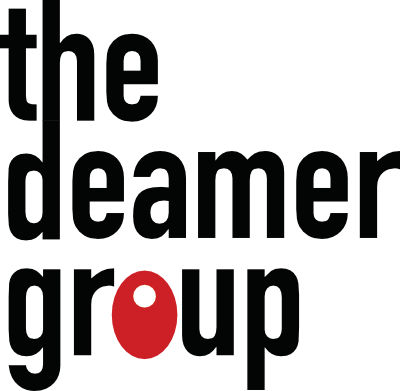13 years and 2 months or 4,821 days. 115,416.5 hours.
That’s the amount of time we spend at work (not counting overtime) during our lifetimes, according to a 2018 estimation by Huffington Post.
You’ll probably agree that’s a lot of time!
We don’t want you to get stressed about the numbers (although they are impressive!), but rather to put it in perspective: For employees who are unhappy, this could be a particularly long time. We’ve picked up on an essential thread of the HR conversation lately about how money and meaning factor into the equation of job satisfaction and, by extension, work-life balance. There are different opinions–some research finds that money is the top attraction of a job, and some that meaning is ultimately paramount.
Here’s what stress in the workplace could mean
Occasional stress is an unavoidable fact of life, but according to a recent CareerCast poll, “a vast majority of Americans feel unduly stressed.” In contrast from the 2017 CareerCast stress survey, which found 69% of responding readers scored their job stress 7 or higher, in 2019, that number rose to 78% of respondents.
Such numbers could signal an underlying problem with company culture and/or employee work-life imbalance, which may, in the long run, fuel disengagement. Of course, even a job that is stressful may still be meaningful (and vice versa).
Although there’s no perfect recipe for success in attracting and retaining great workers, the HR tech company Hibob has found that salary appears to matter less than culture to a majority of job seekers (69%) who will reject a job offer if they learn that a company’s employees are “overworked, burned-out and generally dissatisfied.” Money does matter, but it doesn’t make up for ailing company culture. It’s crucial for companies to keep in mind that dissatisfaction does not stay at the desk when a worker leaves each day.
Ideally, we would like these findings to open up a larger conversation about how humans relate to their workplace and what work means to our lives. On that note…
What’s the purpose of business if not profit?
People’s ability to find meaning in their work is connected both to company impact and work-life balance, making it essential for both employers and staff. Work does not exist in a vacuum and stressed, or even burned-out employees are acutely aware of the time commitment they are devoting to their companies.
The Hibob survey shows that unhappy employees hurt a company’s reputation and ward off potential talent. Of course, no one would actively choose to be unhappy at work. When people are asked, they say they prefer to devote those hours to meaningful, fulfilling work.
A recent Glassdoor study that polled more than 5,000 adults in the U.S., U.K., France, and Germany found a similar result in all four countries–roughly 90% of respondents said they think employers should have a clear mission and purpose. Meanwhile, “two-thirds said […] workers are more motivated and engaged when their company has a strong mission, and 64% said the main reason for staying with their company was its mission.”
Here’s a related but somewhat different lens: A report from online learning platform Udemy supports the idea that employees may derive meaning from achieving a stronger work-life balance. Udemy found that 37% of U.S. workers (the percentage of respondents) ranked work-life balance as the biggest contributor to finding meaning in their work.
There is more that companies can do, whether that’s articulating their mission more strongly to imbue employees with a sense of purpose or integrating policies that promote work-life balance into the company culture. Either or both will create conditions ripe for meaningful work and higher job satisfaction.
What’s company impact got to do with it?
Contributors to Entrepreneur and Forbes explain why focusing on impact makes companies more money faster.
Let’s take Indra Nooyi, the former CEO of PepsiCo, for example. At the time she took the helm in 2006 (she stepped down in 2018 but remained on the board of directors), she created a new mission for the company that aimed to empower and retain employees. Performance with Purpose has three prongs: making healthier foods, protecting the planet, and empowering people. Many employees can get behind the health and environmental mission, which involves rethinking classic products to make them appealing to a health-conscious consumer and reducing the water potato farmers use by 50% in 5 years.
Nooyi supported an environment where employees feel empowered to adapt and make changes as they need in their local situations, which might mean getting creative about recycling in Jonesboro, Arkansas; adapting products to local flavors in China, India and Thailand; and adapting Pepsi factories to the cultural conditions in Saudi Arabia necessary for women to be able to work alongside men.
Certainly, PepsiCo wants to make a profit. But while doing so, they aim to make life better for their employees, customers, and the world at large–and it shows. (Here they are on Forbes’ 2019 list of best employers.)
Consider how mission shapes culture as a retention tool
Culture has a far-reaching influence on employee engagement, job satisfaction, and retention. The Glassdoor study found that 77% of people consider culture before applying for a job, while 56% said they believe culture is more important than salary in gaining job satisfaction (especially salient among young adults, particularly millennials).
Since more than half of all professionals in the US want to work for a company whose mission and vision matches their personal values, giving employees a clear sense of shared purpose is a wonderful retention tool. That’s something that companies of any size (we understand not everyone has the global footprint and resources for a program like PepsiCo’s!) can do to keep its people motivated and energized.
Every company has a reason for existing. It’s an excellent idea for HR to tap into how that motivating mission can shape company culture and, by extension, improve employee experience and attract new talent. From there, it can be mobilized and marketed to further business goals.

